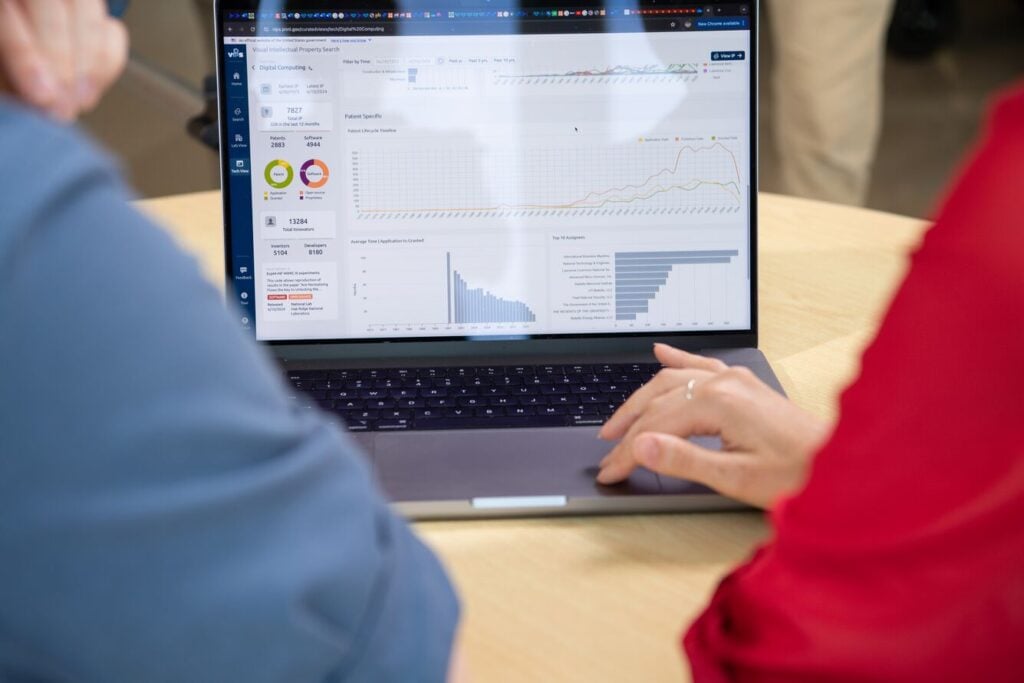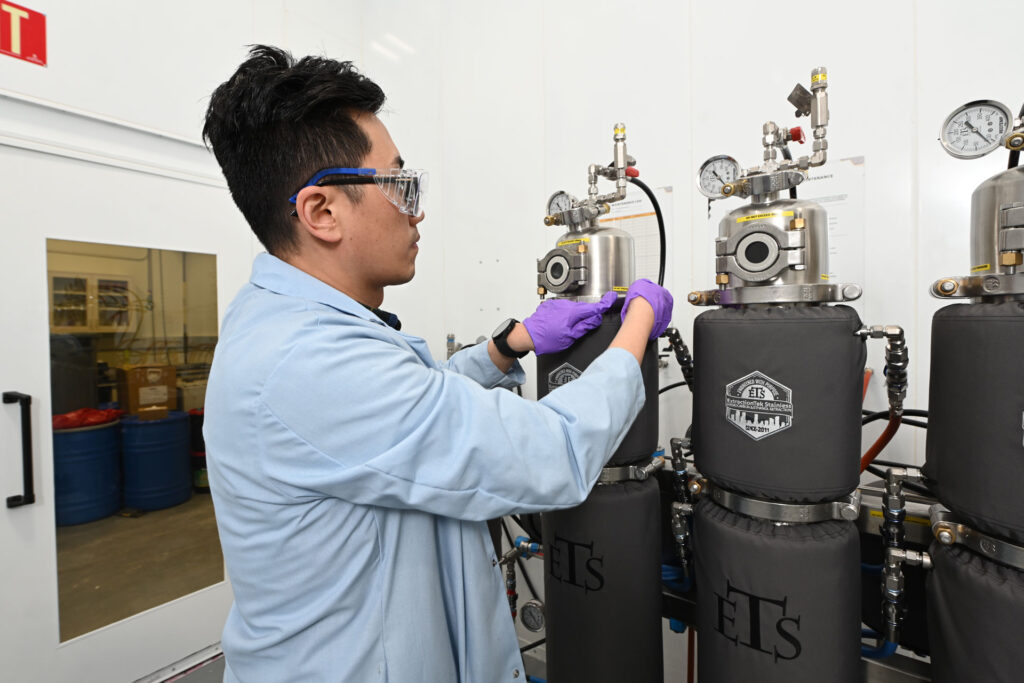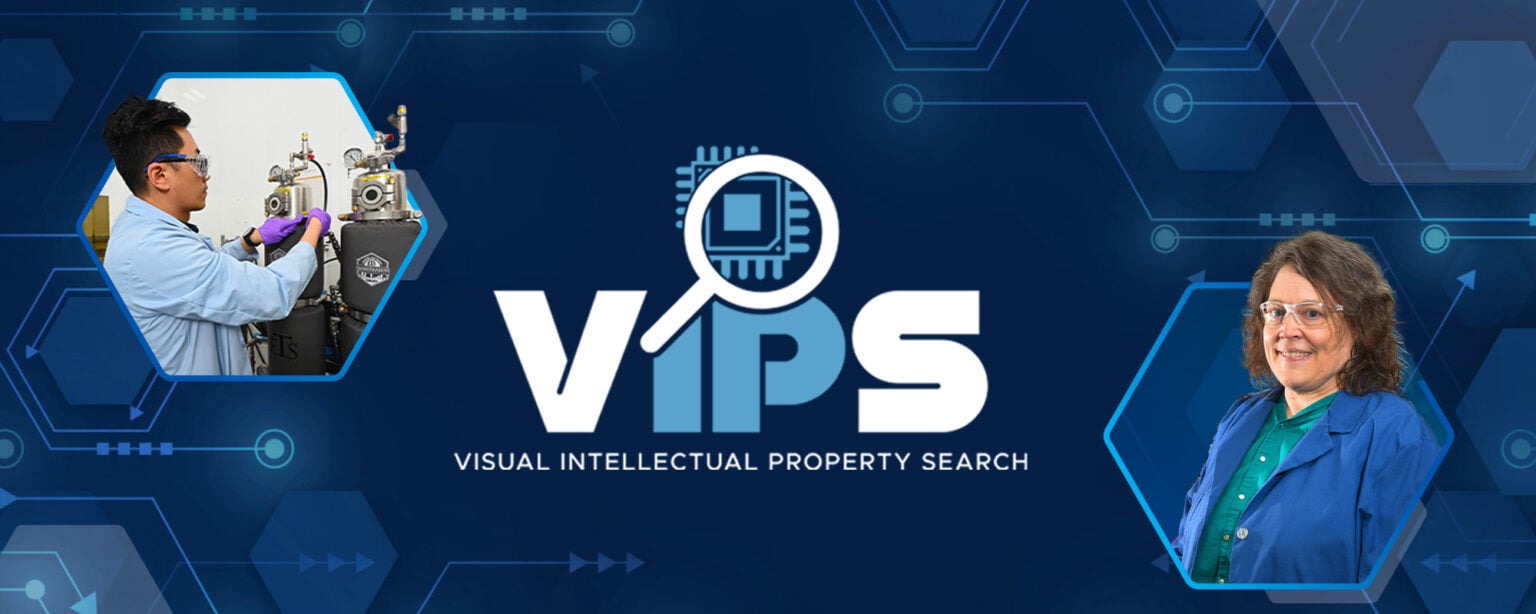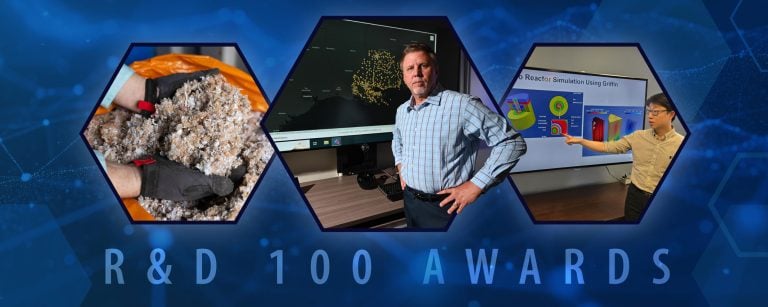Idaho National Laboratory contributed more than 1400 pieces of intellectual property to site
Thousands of the treasures developed by scientists working for the Department of Energy—ideas, methods and software created to address some of the world’s biggest challenges—are now available in one place for entrepreneurs, researchers and others interested in learning more and developing them for commercialization.
DOE’s Office of Technology Transitions (OTT) has created the Visual Intellectual Property Search database, known as VIPS, to make it easy to perform intellectual property searches and find new technologies developed at Idaho National Laboratory, along with DOE’s other national laboratories, several additional plants and sites. The database contains information on more than 14,000 patents issued for research conducted by DOE scientists and engineers, as well as more than 6,200 available software packages.

The system is designed to increase the real-world impact of thousands of research projects undertaken by DOE employees and its contractors. Nearly all of the research featured in VIPS is available for licensing or open-source use.
“This database represents a major step forward in our mission to accelerate the commercialization of DOE technologies, ensuring that groundbreaking research benefits the nation as quickly as possible,” said OTT Deputy Director of Commercialization Programs Victor Kane. “Through VIPS, we’re fostering a culture of collaboration by offering user-friendly access to some of the most cutting-edge technologies developed by DOE scientists.”
The database, officially launched July 31, draws primarily on two sources: patents issued by the U.S. Patent and Trademark Office and DOE CODE, a repository of software maintained by the U.S. Office of Scientific and Technical Information. VIPS draws on those sources to make updates each week.

VIPS comes with robust search and filtering features for users searching for technologies to advance in the marketplace. One can search a broad area, such as “energy” or “sensors.” Or a more specific search can be conducted—within “energy,” for example, “energy storage” and then “hydrogen energy storage” or “thermal energy storage.” A search on thermal energy storage, for example, currently pulls up 152 patents and seven software packages—numbers that will climb as more intellectual property is entered into VIPS. Ultimately the system breaks down DOE technologies into about 800 categories.
The system can be searched and filtered in many other ways, including by type of intellectual property and by DOE entity. A search of any national lab quickly turns up the names of scientists involved with the most patents or software, areas of research with the most entries, the timing of the lab’s patent applications, and the programming languages most often used in available software.
The system also includes an extensive taxonomy, suggesting related scientific terms or disciplines—offering both specific and broad views of affiliated technologies that might be of interest. Links to the laboratory where the invention was created, as well as the relevant commercialization contact, are also included.
The database was funded by the Base Annual Appropriated Technology Commercialization Fund, managed by OTT. VIPS was developed by data scientists and commercialization managers at Pacific Northwest National Laboratory, working closely with counterparts across the country as well as DOE. Tradespace, a firm specializing in the management of intellectual property, helped develop the VIPS taxonomy, assuring that VIPS would be as useful as possible to the private sector.

Idaho National Laboratory showcases a vast collection on the site of more than 960 pieces of intellectual property, including 699 patents and 268 software packages in topic areas of engineering, computer science, energy, material science and more. INL intellectual property is a result of the dedication from its more than 1400 innovators, including its top ten innovators Vicki S. Thompson, William A. Apel, David N. Thompson, Jeffrey A. Lacey, David W. Reed, Bruce M. Wilding, John G. Richardson, Daniel M. Ginosar, Robert V. Fox and Terry D. Turner.
The rollout of VIPS comes 234 years to the day since the first U.S. patent was granted to Samuel Hopkins in 1790. That patent was for a process to make potash, an ingredient used in fertilizer. Research inventions related to energy continue to be essential and are featured prominently in VIPS.
The patents issued to DOE national laboratories, plants and sites were available previously through a portal known as the Visual Patent Search. VIPS offers several improvements—easier usability, a more robust search function, a more sophisticated taxonomy of science areas, and most notably, the addition of more than 6,200 software packages. This is the first time the software offerings have been gathered in one location.

There are some limitations. Classified technologies are not included in the database, and some of the technologies that are included may have already been licensed, though oftentimes arrangements can be made to accommodate potential new licensees.
Entrepreneurs, technology scouts, researchers, business leaders, investors and other interested individuals are encouraged to Search | Discover | Connect.





